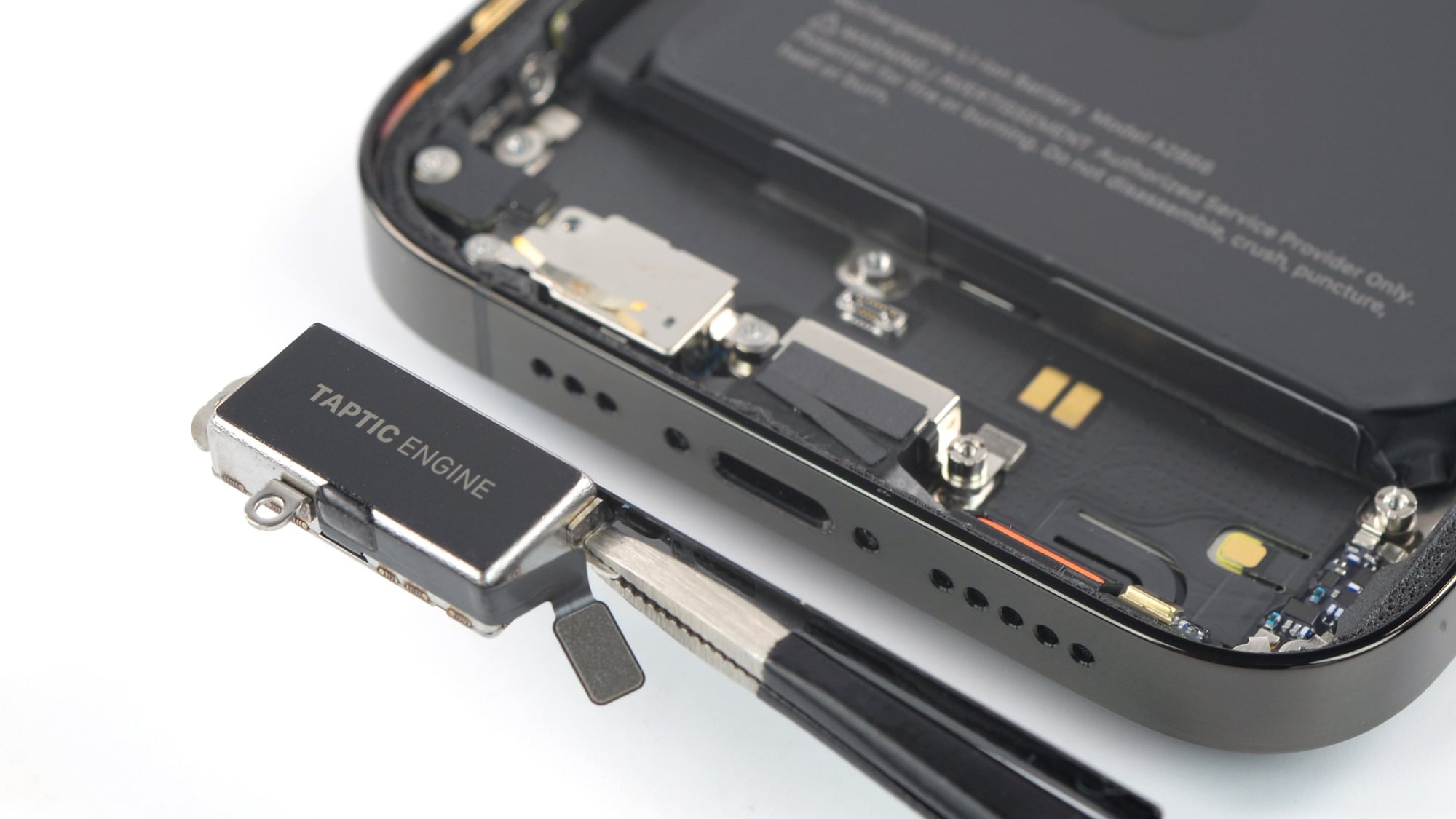Apple Patents Next-Generation Taptic Engine
Apple's Shock-Resistant Haptic Engine: A Durability Leap for Future Devices?
Apple has been granted a patent for a groundbreaking haptic engine design that promises significantly improved durability for its future iPhones, Apple Watches, and other devices. This innovative technology tackles a common point of failure in current models, offering a potential solution to frustrating repairs and replacements.
 The iPhone 14 Pro's Taptic Engine (via iFixit).
The iPhone 14 Pro's Taptic Engine (via iFixit).
Understanding the Patent: A Smarter Spring System
The patent, officially titled "Electronic device having a shock-resistant haptic engine", was granted by the United States Patent and Trademark Office. As reported by Patently Apple, the core innovation lies in a new haptic engine design using a system of non-linear cantilevered springs.
These aren't your typical springs. The design uses springs of varying thicknesses and with chamfered (beveled) edges. This clever design allows the springs to react differently depending on the impact's force. Minor bumps and knocks are handled gently, with the springs providing soft cushioning. However, during a more significant drop or impact, the springs stiffen, absorbing and distributing the force more effectively, preventing damage to the delicate internal components.
How it Works: Protecting the Moving Parts
The haptic engine itself consists of a small, movable mass suspended by flexible components within a protective housing. Normally, this mass vibrates to create the tactile feedback you feel when using your device. But, during a fall, the innovative spring system redirects this moving mass. Instead of slamming into hard surfaces inside the device, the mass is guided towards the spring assemblies built into the housing's lid.
This redirection, coupled with the non-linear stiffness of the springs, extends the time over which the impact force is distributed. Think of it like spreading out the energy of a punch over a longer period—it's much less damaging than a concentrated blow. This controlled dissipation of energy dramatically reduces the risk of the sensitive internal components being damaged.
Design and Implementation: Small, Smart, and Strong
Apple's design prioritizes minimizing size and weight while maximizing resilience. The patent diagrams show both smartphone and smartwatch implementations, demonstrating the versatility of the technology. Multiple spring assemblies integrated into the enclosure lid provide robust protection regardless of the device's form factor.
What This Means for Future Apple Devices
It's crucial to remember that patent filings don't guarantee immediate product releases. They simply indicate areas of active research and development within the company. However, given the vulnerability of the Taptic Engine in current iPhones and Apple Watches, the development of a more durable version is a logical and highly desirable improvement.
The Taptic Engine is responsible for the haptic feedback you feel—the gentle vibrations that provide subtle confirmations of your actions. A failure in this component can often require expensive repairs. A more robust and shock-resistant design could lead to significantly more durable devices, increasing their lifespan and reducing the need for repairs. This would be a significant advantage for both consumers and Apple.
Potential Benefits and Implications
The successful implementation of this technology could lead to several significant benefits:
- Increased Durability: The most obvious benefit is a substantial increase in the device's ability to withstand drops and impacts.
- Reduced Repair Costs: Fewer damaged haptic engines mean lower repair costs for consumers and potentially reduced warranty claims for Apple.
- Enhanced User Experience: A more reliable haptic engine ensures consistent and satisfying tactile feedback, improving the overall user experience.
- Longer Product Lifespan: By increasing durability, the lifespan of Apple devices could be extended, potentially impacting the company's environmental footprint through reduced e-waste.
However, it's important to note that implementing this technology might introduce challenges, such as:
- Increased Manufacturing Costs: The more complex design might lead to higher manufacturing costs, potentially influencing the final price of the devices.
- Potential for Unexpected Issues: While designed for improved durability, there's always a chance of unforeseen issues arising during the implementation phase.
Conclusion: A Promising Step Towards More Durable Apple Devices
Apple's patent for a shock-resistant haptic engine represents a significant step towards more durable and reliable devices. While the exact timeline for implementation remains uncertain, the technology holds immense promise for improving the longevity and user experience of future iPhones, Apple Watches, and other Apple products. The innovative spring system offers a clever solution to a persistent problem, potentially minimizing costly repairs and improving the overall satisfaction of Apple device owners.
This article, "Apple Patents Next-Generation Taptic Engine" first appeared on MacRumors.com
Discuss this article in our forums
from MacRumors
-via DynaSage

